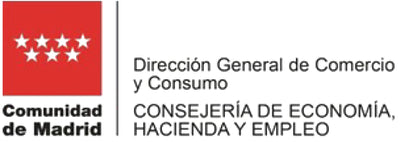¿Qué es Life-Centered Design y cómo lo aplicamos en Minimalism?
Todos recordamos esos días en los que desarrollábamos sociedades sin prestar atención al entorno. Las apoyábamos en modelos de producción que destruían los recursos naturales. Basábamos el consumo en la acumulación y la estacionalidad. Esos días quedaron atrás, o ¿aún no?
Esta crisis nos ha dado la oportunidad de cambiar el tener por el ser. Habrá dudas e incertidumbre, pero después vendrá un periodo de reconstrucción en el que ya sabremos que somos naturaleza. Ese momento es ahora.
¿Qué es Life-Centered Design?
User Centered Design > Human Centered Design > Life-Centered Design
Como diseñadores, hemos cimentado el desarrollado de modelos de negocios en nuestros usuarios, poniéndonos en su piel, comprendiendo sus necesidades y haciendo foco en las interacciones de estos con nuestros productos o servicios. El usuario copaba el centro de todos nuestros pensamientos.
Poco a poco hemos ido abriendo ese foco, dándonos cuenta de la necesidad de comprender a esos usuarios más allá de la relación puntual con nuestros productos; empezamos a hablar de humanos. Comenzamos a pensar en niveles más elevados, a pensar en colectivos, en sociedades.
El hecho de pensar a escala humana está genial, nos da una visión más amplia del tablero de juego. Factores como la etnografía o la sociología comienzan a ganar más peso en la partida. Una partida en la que la figura humana sigue estando en el centro del tapete. ¿Y quién la ha puesto ahí?
Como si de una revolución heliocéntrica se tratase, Life-Centered Design desplaza al humano del centro de todo y lo sitúa cohabitando con los demás integrantes de la partida. El medio ambiente acaba de iniciar partida en el servidor.
Life-Centered Design abre el foco e introduce una visión más sistémica, holística y respetuosa con el entorno. Se apoya en el diseño para generar una unión entre personas, economía y medio ambiente. Sigue teniendo presente al humano, pero como parte de un todo, como parte de un sistema más amplio.
En este planeta en el que cada vez somos más, debemos de diseñar para producir y consumir menos. Evolucionar a modelos económicos que vayan más allá de producir tantas versiones de algo de la forma más barata posible, tantas veces como sea posible. Debemos comenzar a diseñar con la intención de tener el menor desperdicio, el menor desorden y la menor cantidad de versiones de la misma cosa posible. Porque, después de todo, nuestra realidad física es finita.
Vale, y como solemos decir "¿Esto como se baja a tierra?"
Os ponemos nuestro caso práctico, en Minimalism no usamos ningún tejido de procedencia animal, las prendas están fabricadas a partir de algodón orgánico de producción sostenible, no usamos ningún tipo de químicos en los tintes, cuidamos cada paso de la cadena de producción erradicando totalmente el plástico de todos ellos, usamos packaging reciclado y biodegradable, obviamos elementos prescindibles como las típicas etiquetas de cartón, reducimos la huella de carbono al tener nuestras fábricas a pocos kilómetros de nuestro centro logístico, reducimos las emisiones en mensajería al comprar en packs... y os decimos claramente "No lo compres si no lo necesitas".
Podríamos decir que con Life-Centered Design pasamos del "yo" al "nosotros". Dejamos de pensar únicamente en las necesidades actuales que tenemos como especie, para empezar a pensar a nivel de ecosistemas y el impacto futuro que tendrán nuestras acciones en un sistema mayor, el planeta.
Somos naturaleza.
Queremos saber qué te ha parecido este artículo. Déjanos tu opinión en los comentarios, y si quieres seguir profundizando sobre este tema, puedes escuchar nuestro último podcast de OPENSTARTUPS con el Design Manager de BBVA, Andrés Botero, donde abordamos este y muchos temas más.
Nuestros packs de algodón orgánico más vendidos




















Comentarios
Catalina dijo:
Supe ayer de la existencia de vuestra firma escuchando un podcast de ‘El Estoico’ y rápidamente he querido saber más. Una filosofía muy interesante y necesaria. He mirado vuestras prendas y objetos, sin embargo considero que las camisetas no tienen un corte atractivo, en el caso de chicas por ejemplo. Seguro que son muy cómodas y duraderas, agradables al tacto pero creo que también podrían ser más favorecedoras. Mi modesta opinión por si contribuye en algo. Gracias por iniciar este camino.
Antonio dijo:
G R A C I A S
maria dijo:
David dijo: